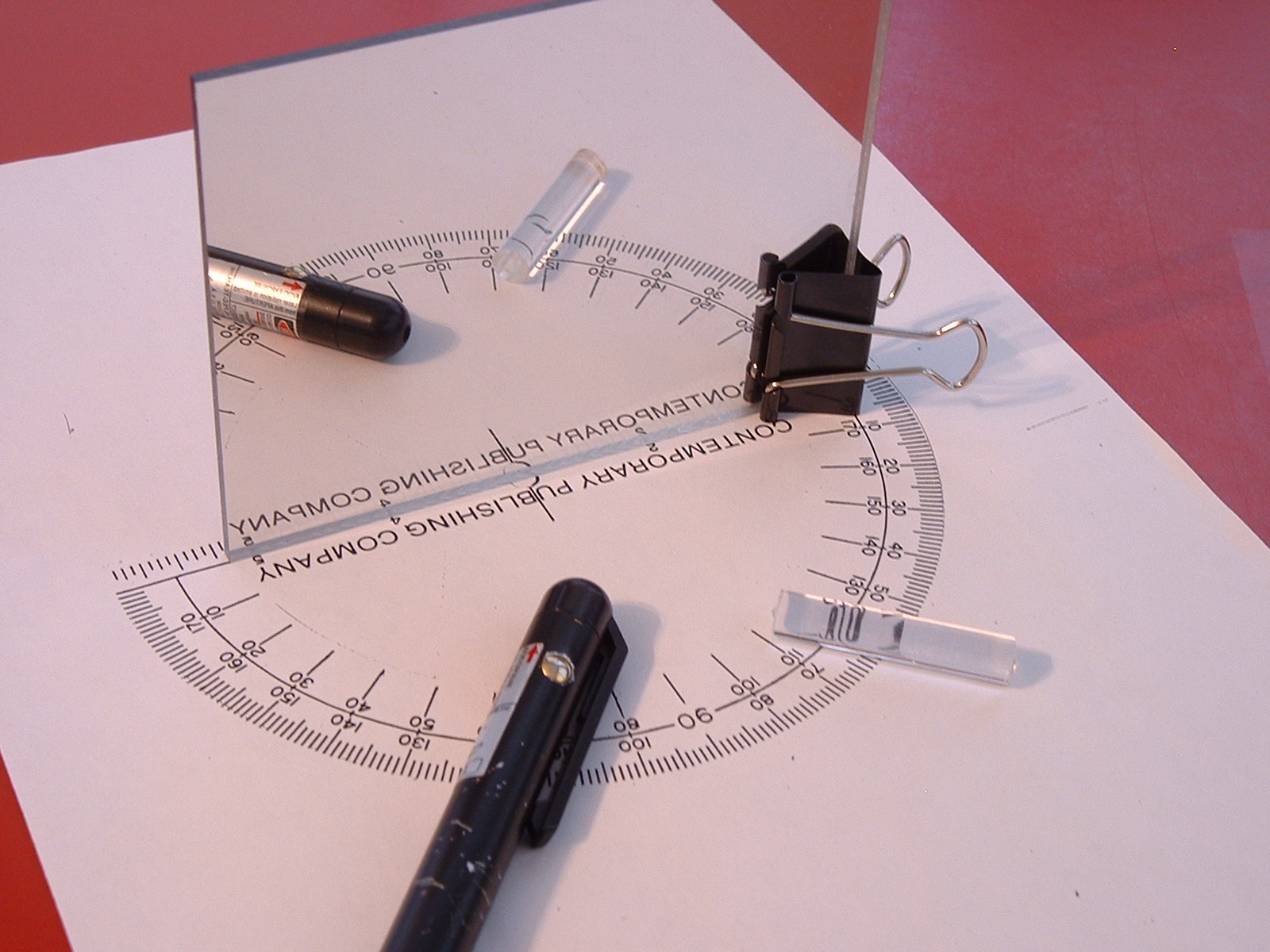
PHYSICS AND THE VISUAL ARTS
Notes on LAB 2
REFLECTION OF LIGHT
One of the steps in activity one calls for measuring the angle of incidence and the angle of reflection. You will need
to use a plane mirror, one or two binder clips to hold it upright, a protractor from your lab manual, a laser, and the
lucite rod to spread the laser beam into a fan shaped beam. The photo below shows the needed supplies.

Fig. 1. Mirror, protractor, binder clip, laser, and lucite rod.
Notice the scale on the protractor. (You will have to read upside down in the photo above, but you should refer to the
one from your manual to make it easier.) Notice that there are two scales. The outer scale starts at 0° on the left and
increases to 180° as you go clockwise around the arc. The inner scale starts at 0° on the right and increases as you
move counterclockwise around the arc. Both agree at the 90° mark.
If you position the mirror on the line as shown above, the normal to the mirror is along the direction to the 90°
mark.Because you are using a back silvered mirror, you may need to position it slightly in front of the reference line
so that the centering circle (at the origin of the semicircle) is seen complete when looking at the circle and its
reflection.
Hold the lucite rod horizontally as shown in the photo below. It acts as a cylindrical lens to spread the light out in
a fan shape (which you could check with talcum dust), spreading it vertically but not horizontally. With the rod and
the laser close to the paper, you should be able to get a line of light to show along the protractor and reflected back
onto the protractor to identify the angles of incidence and reflection. In Fig. 2 below, the incident light makes an
angle of 50° with the reference origin according to the outer scale. However the angle of incidence is measured from
the normal, in this case at 90°. Consequently, the angle of incidence is 90° - 50° = 40°.
The angle of reflection is measured similarly. Again using the outer scale, the emerging beam is at 130°, which
corresponds to an angel of reflection of 40° (130° - 90° = 40°). In this case we subtract 90 from the measured angle
in order to obtain a positive angle of reflection in accordance with the definition.
You should make several measurements for yourself and complete the table on page 2 of lesson 2. It may require a little
practice and patience to get everything aligned correctly so that the two angles agree as they should.

Fig. 2 Laser light aimed at the mirror is reflected. By spreading the beam, its horizontal path is seen
on the protractor.
Back to PHYS 153 Home
Back to Physics Dept web page.
Back to USC home page.
Last Modified: 07/13/11
Maintained by:rjones@mail.psc.sc.edu



